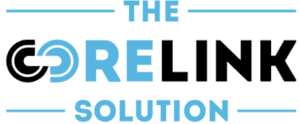4 Benefits of Teaching Financial Literacy and How to Get Started Today
According to First Republic Bank, 340 million Americans carry an average of $104,215 in debt across mortgages, home equity lines, student loans, and credit cards.
Bankrate reports that 48% of US adults don’t have enough money saved in an emergency fund, and 61% of adults live paycheck to paycheck. Over half of us live in a constant state of financial anxiety.
We need an intervention!
Financial management is a skill best taught early, as it can become an asset unto itself.
In fact, people with higher financial literacy tend to live within their means, have sufficient emergency funds, and claim to have at least one retirement account.
It sounds better than counting pennies.
So, what exactly is this thing called financial literacy? What are its perks and how can we instill the importance of money management in our children, both at school and at home?
So glad you asked! Let’s get started.
What is financial literacy?

Financial literacy is understanding basic financial concepts, how to navigate each one, and how to apply them to one’s everyday life.
Financial literacy has five components: earn, spend, save and invest, borrow, and protect.
Forbes has come up with a list of topics that fall under each one of these:
- How to open a bank account.
- Paying bills on time.
- Creating and managing a budget.
- How credit works and how to improve your credit score.
- Using debt responsibly.
- Saving for retirement.
- Comparing financial products like credit cards or investments.
While this is not an all-encompassing list, it does give you a good idea of what being financially literate means.
Is there a need for financial literacy?
One of the most significant stressors for Americans is money: how to get it, how to keep it and how to get more in the future.
The 2023 Financial Literacy Crisis in America Report found that 88% of U.S. adults said high school did not leave them “fully prepared for how to handle money in the real world.” Seventy-two percent said they would have been better off financially had they taken a personal finance class in high school.
The lack of financial education leads to poor decision-making, financial stress, insecurity, and debt for the individual and our nation. The past four years have been a prime example of what happens when large student loans go unpaid.
Teaching students sound financial principles early on sets them up to create healthy habits around money management and ensures their stable future.
What are the benefits of teaching financial literacy?
Teaching financial literacy has many benefits, which are two-fold; teachers as well as students learn valuable lessons that they can directly apply to their lives.
Successful financial literacy programs can:
- Teaches students how to make better financial decisions. When students are taught the risks and rewards of their financial decisions, they can see the impact of their choices in a safe environment. The FINRA Foundation found “that students with higher financial literacy were less likely to have late fees, make only minimum payments on their credit cards, and take out payday loans,” which means that financial literacy can help students incur less debt or avoid it altogether.
- Promotes long-term financial health. By learning basic finance principles like compound interest and investing in the stock market, students can plan for retirement and other financial goals. The ability to prepare for their future means that these same students are more likely to be able to cover emergency expenses and less likely to be late on monthly payments. Which then contributes to higher credit scores and lower interest rates.
- Instills sound debt principles. Not all debt is created equally; some debt is necessary to build credit and equity. The danger is when we don’t know the appropriate amount of debt and take on more than we should. Financial literacy at the pre-college level equips students with the tools they need to finish their college degree in good financial standing and even how to avoid getting into too much debt by filling out the Free Application for Student Aid (FAFSA) using grants and applying for scholarships.
- Have a positive ripple effect in all areas of society. U.S. adults who took a personal finance class are five times more likely to say they graduated high school fully prepared for handling money in the real world. Some states even notices credit scores rise and crime rates fall after implementing financial literacy requirements. And because money is at the root of many of our anxious woes, being financially literate and, therefore, solvent can have a positive impact on mental health and depression.
Challenges of Teaching Financial Literacy in Schools
While the benefits of teaching financial literacy are clear, there are obstacles to implementing such programs.
Instructors, for example, may not be well-versed in financial literacy enough to teach it. Or there may just be one teacher to service the whole school, which is never ideal.
Teaching complex principles to various age groups can be challenging. Younger children have shorter attention spans, and older kids and teens need a connection with the lesson to stay engaged.
Limited resources are always an issue, regardless of the curriculum and financial education is no different. Finding resources that break down advanced concepts in a way young minds can understand is perhaps the biggest challenge of all.
Despite all these difficulties, there are ways you can help the student in your life start their journey to financial mastery.
Tips To get You Started

If your school does not have a financial class available for your child, there are things you can do to fill in the gap.
- Let them into your finances. Many kids learn best by doing, so let them see how you budget your finances, pay the bills, or save money aside for things like groceries, food, and other necessities. They will learn the mechanics and logistics of what it takes to sustain a home financially and start to grasp the value of items that they use every day. If you still need a budget, there is no longer time than the present to start.
- Have kids earn money with chores. A great way to teach kids responsibility and the value of money is by giving them chores and paying them. To drive the lesson home, consider giving them “bills” to pay in proportion to what they earn and collect that money at predetermined times. This will teach your student the rhythm of paying bills on time and what to do with the money left over. This is also an excellent time to teach them about savings.
- Go beyond the classroom. Commercial Bank of California (CBAL) says, “Community organizations, libraries, and financial institutions offer financial education programs that students can attend. These programs cover financial literacy topics like debt management and are customizable to different age groups and learning levels. These programs also allow students to network with financial experts and gain valuable insights into personal finance.”
- Partner with financial institutions. CBAL also advises parents to reach out to financial institutions: ” Banks and financial institutions like Commercial Bank of California (CBC) support financial literacy by providing educational workshops and seminars for students and the chance to hear from financial advisors or bankers who share their knowledge and experiences.”
Take Charge Today
Infamous rapper Biggy Smalls once said, “Mo Money, Mo Problems,” yet when you lack money, there are no bigger problems to be had.
Money is essential for feeding and keeping us clothed, sheltered, and secure into our golden years.
That is why teaching our young people how to handle money wisely is so important. By starting their financial education early, students can build healthy habits to carry on into adulthood.
Not only will they learn to avoid large amounts of debt, but by learning how to invest, they can build a more stable tomorrow for themselves, becoming happier and more productive members of society in the process.
Equipping them with this knowledge doesn’t have to be hard; with the tips we’ve given you, you and your child can start taking charge of your money and future.
How will you start your journey today?
If you want to receive more articles like this one, please subscribe to our newsletter. You can also support the continued creation of this content by making a tax-deductible donation.




